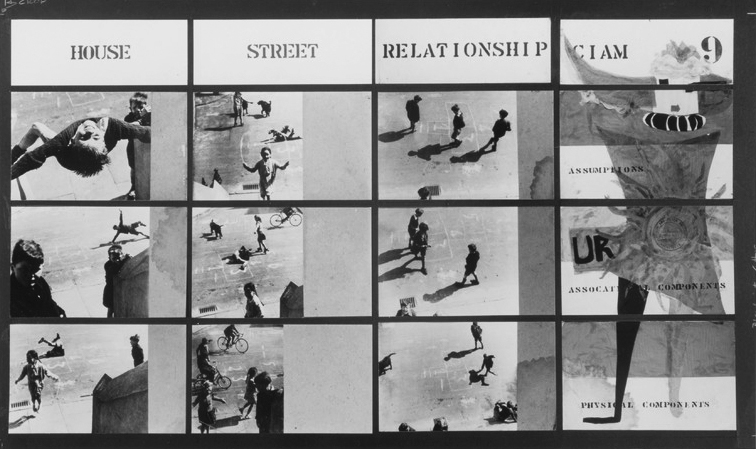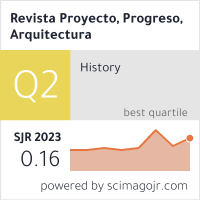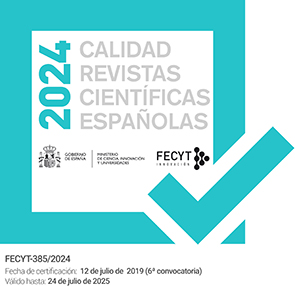PLAYING THE CITY. CHILDHOOD, PLAY AND SPACE IN TEAM 10’S MANIFESTO IMAGES
DOI:
https://doi.org/10.12795/ppa.2023.i29.04Keywords:
architecture, everyday life, urban photography, Alison & Peter Smithson., Aldo van Eyck, Nigel HendersonAbstract
he article examines the capacity of play to produce collective space, with the aim of highlighting its relevance and potential in the field of architecture. The interpretative reading of images and diagrams produced in the framework of the last three editions of CIAM (1953, 1956 and 1959) by Team 10 members, Aldo van Eyck and Alison and Peter Smithson, serves as a premise for placing the aforementioned objective in a disciplinary context. Through a historical-comparative research methodology that links the main objects of study with references and experiences from various disciplinary fields (with particular emphasis on the field of education), we proceed with the analysis of the images, identifying and proposing four conceptual axes that can be transferred to the contemporary work of architects: the celebration of the everyday, the use of the participatory language of urban photography, the understanding of the street as a stage for life, and the value of play in the production of collective space. Under the aforementioned premises, the text opens the possibility and the debate towards the integration of play as an index of valuation and projection of built space, highlighting, 70 years after CIAM (1953), the validity of the ideas of Team 10 and the disciplinary relevance of the multiple ways of doing architecture that the avant-garde group proposes through its individual and collective operations.
Downloads
References
BAUDRILLARD, Jean. El sistema de los objetos. Mexico: Siglo xxi, 1969.
BORGONUOVO, Valerio; FRANCESCHINI, Silvia. Global Tools: gli strumenti di una scuola possibile. En: Valerio
BORGONUOVO; Silvia FRANCESCHINI, eds. GLOBAL TOOLS 1973-1975. Quando l’educazione coinciderá con la vita. Roma: NERO, 2018, pp. 9-31.
BRANZI, Andrea. Educación y espacio relacional. En: Giulio CEPPI; Michele ZINI, eds. Niños, espacios, relaciones: metaproyecto de ambiente para la infancia. Buenos Aires: Red Solare, 2009, pp. 121-127.
CARERI, Francesco. The Storyteller. En: Mark GODFREY; Klaus BIESENBACH, eds. Francis Alÿs: A Story of Deception. New York: The Museum of Modern Art, 2011, pp. 183-185.
CORVALÁN TAPIA, Felipe. Re-presentar la ciudad. Urban Re-Identification Grid. Aproximaciones al espacio como acontecimiento [en línea]. En: Ana MEJÓN; Farshad ZAHEDI; David CONTE IMBERT, eds. Congreso Internacional Interdisciplinar: La ciudad: imágenes e imaginarios (2018, Getafe) [en línea]. Getafe: Universidad Carlos III de Madrid, 2019, pp. 535-545 [consulta: 20-09-2023]. Disponible en: http://hdl.handle.net/10016/29987.
DELGADO, Manuel. En busca del espacio perdido. En: Clara ESLAVA; Isabel CABANELLAS, eds. Territorios de la infancia. Diálogos entre arquitectura y pedagogía. Barcelona: Editorial Graó, 2005, pp.11-17.
DIAZ-RECASÉNS MONTERO DE ESPINOSA, Gonzalo. Golden Lane. Sobre la cualidad vacía del espacio público en la obra de los Smithson [en línea]. En: Proyecto, Progreso, Arquitectura. Vivienda colectiva: sentido de lo público. Sevilla: Editorial Universidad de Sevilla, noviembre 2011, n.° 5, pp. 60-71 [consulta: 20-09-2023]. ISSN-e 2173-1616. DOI: https://doi.org/10.12795/ppa.2011.i5.04.
CABANELLAS Isabel; ESLAVA Clara, coords. Territorios de la infancia. Diálogos entre arquitectura y pedagogía. Barcelona: Editorial Graó, 2005.
CARLO, Giancarlo de. How/Why to build school builings. En: Harvard Educational Review. Architecture and Education, Cambridge: Harvard Education Publiching Group, Winter 1969, vol. 39, n.° 4, pp. 12-34. ISSN 0017-8055.
FERNÁNDEZ VILLALOBOS, Nieves. La influencia de Nigel Henderson en la actitud crítica de Alison y Peter Smithson. International Conference on Architectural Design & Criticism. Madrid: Criticall Press, 2014, pp. 397-407. ISBN 978-84-697-0424-0.
GULDEMOND, Jaap; BLOEMHEUVEL Marente. Francis Alÿs. The Street, the Rules and the Game. En: Jaap GULDEMOND; Marente BLOEMHEUVEL, eds. Francis Alÿs: Children’s Games. Rotterdam: Nai010 Publishers, 2020, pp. 7-11.
HARARI, Yuval Noah. Sapiens, de animales a dioses: breve historia de la humanidad. Lima: Debate, 2017.
HIGHMORE, Ben. Between Modernity and the Everyday: Team 10. Conference Team 10 – Between Modernity and the Everyday. [s.e.]: Delft, 2003, pp.35-45.
HOYUELOS, Alfredo; CABANELLAS, Isabel. Malaguzzi y el valor de lo cotidiano [en línea]. Extracto de Ponencia Congreso de Pamplona, diciembre 1996 [consulta: 20-09-2023]. Disponible en: https://es.scribd.com/doc/302225733/Alfredo-Hoyuelos#
JUÁREZ CHICOTE, Antonio; RODRÍGUEZ RAMÍREZ, Fernando. El espacio intermedio y los orígenes del Team X [en línea]. En: Proyecto, Progreso, Arquitectura, Arquitecturas en común. Sevilla: Editorial Universidad de Sevilla, noviembre 2014, n.° 11, pp. 52-63 [consulta: 20-09-2023]. ISSN-e 2173-1616. DOI: http://dx.doi.org/10.12795/ppa.2014.i11.04.
KINCHIN, Juliet. Hide and Seek: remapping modern design and Childhood. En: Juliet KINCHIN, ed. Century of the Child: Growing by Design. New York: The Museum of Modern Art, 2012, pp. 28-57.
KOZLOVSKY, Roy. Adventure Playgrounds and Postwar Reconstruction. En: Marta GUTMAN; Ning de CONINCK-SMITH, eds. Designing Modern Childhoods: History, Space, and the Material Culture of Children. New Jersey: Rutgers University Press, 2008, pp. 171-190.
KOZLOVSKY, Roy. The Architectures of Childhood. Children, Modern Architecture and Reconstruction in Postwar England. London: Routledge, 2013.
LUC, Jean-Noël. I primi asili infantili e l’invenzione del bambino. En: Egle BECCHI; Dominique JULIA, eds. Storia dell’infanzia dal settecento a oggi. Roma-Bari: Gius. Laterza & Figli, 1996, pp. 282-305.
MATESANZ VENTURA, Natalia. Gradas, domos y casitas. Arquitectos activadores del espacio común en la plaza cultural, Nueva York [en línea]. En: Proyecto, Progreso, Arquitectura. Arquitecturas al margen. Sevilla: Editorial Universidad de Sevilla, noviembre 2018, n° 18, pp. 89-101. ISSN-e 2173-1616. DOI: http://dx.doi.org/10.12795/ppa.2018.i18.06.
MAYORAL CAMPA, Esther. Pensamientos compartidos. Aldo van Eyck, el grupo Cobra y el arte [en línea]. En: Proyecto, Progreso, Arquitectura. Arquitecturas en común. Sevilla: Editorial Universidad de Sevilla, noviembre 2014, n.° 11, pp. 64-75 [consulta: 20-09-2023]. ISSN-e 2173-1616. DOI: http://dx.doi.org/10.12795/ppa.2014.i11.05.
MCCARTER, Robert. Aldo van Eyck. New Haven: Yale University Press, 2015.
MUMFORD, Lewis. El mito de la máquina: Técnica y evolución humana. Logroño: Pepitas de calabaza, 2010.
PARRA-MARTÍNEZ, José; STUTZIN-DONOSO, Nicolás; LÓPEZ-CARREÑO, Juan Manuel. Playgrounds y espacio común. A propósito del juego en la ciudad suspendida [en línea]. En: Proyecto, Progreso, Arquitectura, Emergencias del espacio común. Sevilla: Editorial Universidad de Sevilla, noviembre 2021, n.° 25, pp. 50-67 [consulta: 20-09-2023]. ISSN-e 2173-1616. DOI http://dx.doi.org/10.12795/ppa.2021.i25.03.
PAYÀ RICO, Andrés. Aprender deleitando. El juego infantil en la pedagogía española del siglo xx [en línea]. En: Bordón. Revista de pedagogía, juego, educación y aprendizaje. La actividad lúdica en la pedagogía infantil. Madrid: Sociedad Española de Pedagogía (SEP), 2013, vol. 65, n.° 1, pp. 37-46. ISSN 0210-5934. DOI: https://doi.org/10.13042/brp.2013.65100.
PÉREZ DE ARCE, Rodrigo. Materia Lúdica: Arquitecturas del juego. En: ARQ. Juegos / Playing [en línea]. Santiago: Ediciones ARQ, diciembre 2003, n.° 55, pp. 9-15 [consulta: 20-09-2023]. ISSN 0717-6996. Disponible en: https://www.scielo.cl/scielo.php?script=sci_arttext&pid=S0717-69962003005500003; DOI: http://dx.doi.org/10.4067/S0717-69962003005500003.
PÉREZ DE ARCE, Rodrigo. Calle y Playground: la domesticación del juego en el proyecto moderno. En: Lars BANG LARSEN; Rodrigo PÉREZ DE ARCE, eds. Playgrounds - Reinventar la plaza. Madrid: Museo Nacional Centro de Arte Reina Sofía, 2014, p. 80-97.
SMITHSON, Alison y Peter. “Lo así hallado” y lo “hallado”. En: Enrique WALKER, ed. Lo ordinario. Barcelona: Editorial Gustavo Gili, 2010, pp. 93-100.
STUTZIN, Nicolás. Políticas del playground: Los espacios de juego de Robert Moses y Aldo van Eyck [en línea]. En: ARQ. Santiago: Ediciones ARQ, diciembre 2015, n.° 91, pp. 32-39 [cvonsulta: 20-09-2023]. ISSN 0717-6996. Disponible en: https://www.scielo.cl/scielo.php?script=sci_arttext&pid=S0717-69962015000300005; DOI: http://dx.doi.org/10.4067/S0717-69962015000300005.

Published
How to Cite
Issue
Section
License
Las ediciones impresa y electrónica de esta Revista son editadas por el Secretariado de Publicaciones de la Universidad de Sevilla, siendo necesario citar la procedencia en cualquier reproducción parcial o total.
Salvo indicación contraria, todos los contenidos de la edición electrónica se distribuyen bajo una licencia de uso y distribución “Creative Commons Atribución-NoComercial-SinDerivar 4.0 Internacional” ![]() . Puede consultar desde aquí la versión informativa y el texto legal de la licencia. Esta circunstancia ha de hacerse constar expresamente de esta forma cuando sea necesario.
. Puede consultar desde aquí la versión informativa y el texto legal de la licencia. Esta circunstancia ha de hacerse constar expresamente de esta forma cuando sea necesario.
Los autores/as que publiquen en esta revista aceptan las siguientes condiciones:
- Los autores/as conservan los derechos de autor y ceden a la revista el derecho de la primera publicación, con el trabajo registrado con la licencia de atribución de Creative Commons, que permite a terceros utilizar lo publicado siempre que mencionen la autoría del trabajo y a la primera publicación en esta revista.
- Los autores/as pueden realizar otros acuerdos contractuales independientes y adicionales para la distribución no exclusiva de la versión del artículo publicado en esta revista (p. ej., incluirlo en un repositorio institucional o publicarlo en un libro) siempre que indiquen claramente que el trabajo se publicó por primera vez en esta revista.
- Se permite y recomienda a los autores/as a publicar su trabajo en Internet (por ejemplo en páginas institucionales o personales) antes y durante el proceso de revisión y publicación, ya que puede conducir a intercambios productivos y a una mayor y más rápida difusión del trabajo publicado (vea The Effect of Open Access).








